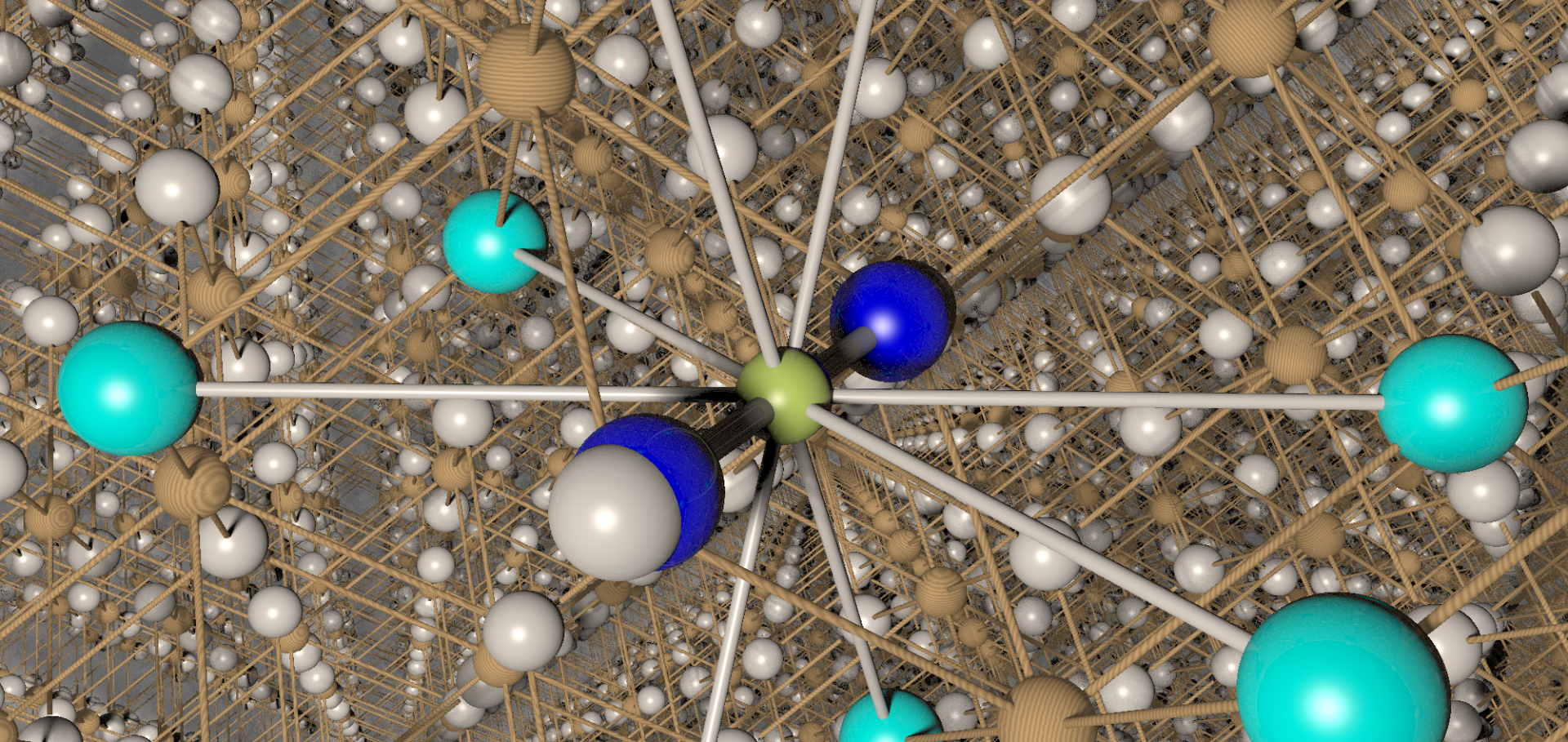Muon-spin relaxation and heat capacity measurements on the magnetoelectric and multiferroic pyroxenes LiFeSi2 O6 and NaFeSi 2 O6
Physical Review B - Condensed Matter and Materials Physics 81:21 (2010)
Abstract:
We present the results of muon-spin relaxation and heat capacity measurements on LiFeSi2O6 and NaFeSi2O 6. In synthetic samples of both compounds we see a single muon oscillation frequency consistent with commensurate magnetic structures below TN. In contrast, for a specimen of naturally occurring NaFeSi2O 6, in which multiferroicity has been observed, a rapid Gaussian depolarization of the muon polarization is observed instead, showing that the magnetic structure in this case is more complex. Heat capacity measurements reproduce the phase diagrams previously derived from other techniques and demonstrate that the main contribution to the magnetic entropy is associated with the buildup of correlations in the quasi-one-dimensional Fe3+ chains. © 2010 The American Physical Society.Magnetic and structural properties of monoradicals and diradicals based on thienyl-substituted nitronyl nitroxide
Physica B: Condensed Matter 405:11 SUPPL. (2010)
Abstract:
Magnetic properties of monoradicals and diradicals based on thienyl-substituted nitronyl nitroxide (NN) were investigated by measuring temperature and magnetic-field dependences of magnetization. The magnetic behavior of the monoradical 3-benzo[b]thienyl NN (3-BTHNN) is interpreted in terms of the quasi-2D ferromagnetic Heisenberg model with the coupling constant J/k= +0.16 K and J'/k= +0.02 K, while the alternating antiferromagnetic (AFM) intermolecular interactions are observed in the monoradicals, 2- and 3-thienyl NN (2- and 3-THNN). In contrast, the magnetic behavior of the diradicals, 2,3- and 2,5-bis(NN)thiophene (2,3- and 2,5-THBNN), is explained by quite strong AFM intramolecular interactions between the two spin centers, each located on the two NN moieties. We discuss here the origin of the magnetic interactions observed in these radicals by considering their molecular and crystal structures determined by the X-ray diffraction techniques. © 2010 Elsevier B.V. All rights reserved.Magnetic breakdown and angle-dependent magnetoresistance oscillations
Physica B: Condensed Matter 405:11 SUPPL. (2010)
Abstract:
We describe how the presence of magnetic breakdown affects the appearance of angle-dependent magnetoresistance oscillations in an organic metal. The model takes account of all the contributions from quasiparticles undergoing both magnetic breakdown and Bragg reflection at each junction and allows extremely efficient simulation of data which can be compared with experimental results on κ-(BEDT-TTF)2Cu(NCS)2. © 2010 Elsevier B.V. All rights reserved.Quantum Theory of the Electron Liquid, by G.F. Giuliani and G. Vignale
Contemporary Physics Taylor & Francis 51:3 (2010) 284-285
Relaxation of muon spins in molecular nanomagnets
Physical Review B - Condensed Matter and Materials Physics 81:14 (2010)


